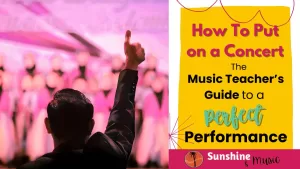Let’s talk about instruments for elementary music. Every school is going to be equipped with different amounts of instruments. If your school is just starting their music program, you might even be starting from zero!
But don’t panic. This post is here to support you whether your question is “What kind of music can I make with no instruments” or “What are the must buy instruments for elementary music.” Or even “What big ticket items should I buy when a load of money comes my way.”
Whatever your situation, I’ll take you from a program with no music instruments to an “everything you want and more” program. These are my personal recommendations, based on 15+ years of teaching. Obviously, you know the needs of your program and your teaching style best, so in the end, do what works for you!
Teaching Music With No Instruments
At first glance, this can look pretty daunting. Let’s be honest. It’s not ideal. But it is not impossible. In fact, it may bring you and your class closer to the fundamentals of music and help them internalize rhythm, melody and harmony at new levels!
Body Percussion
Let’s start with body percussion. Honestly I think you can turn just about anything into body percussion.
Have students pat, snap and clap rhythms, ostinati and just about anything else you can think of.
Here is a fun body percussion activity I do to experience changing tempo and dynamics in The Hall of the Mountain King by Edvard Grieg.

Movement
Many musical concepts can be grasped through movement. Fast and Slow. High and Low. Loud and Quiet. Really any musical element you want to teach. There are so many ways to get creative and have fun with movement activities in music class.
One of my favorite units for using movement is my Carnival of the Animals unit that I do with kindergarten and first grade each year. We explore concepts such as fast and slow, instrument timbres, musical form and more, all through giggle inducing movement.
Check out Carnival of the Animals movement ideas here.
And with my older grades, one of my most simple but effective lessons is teaching different tempos using the Grand Old Duke of York.
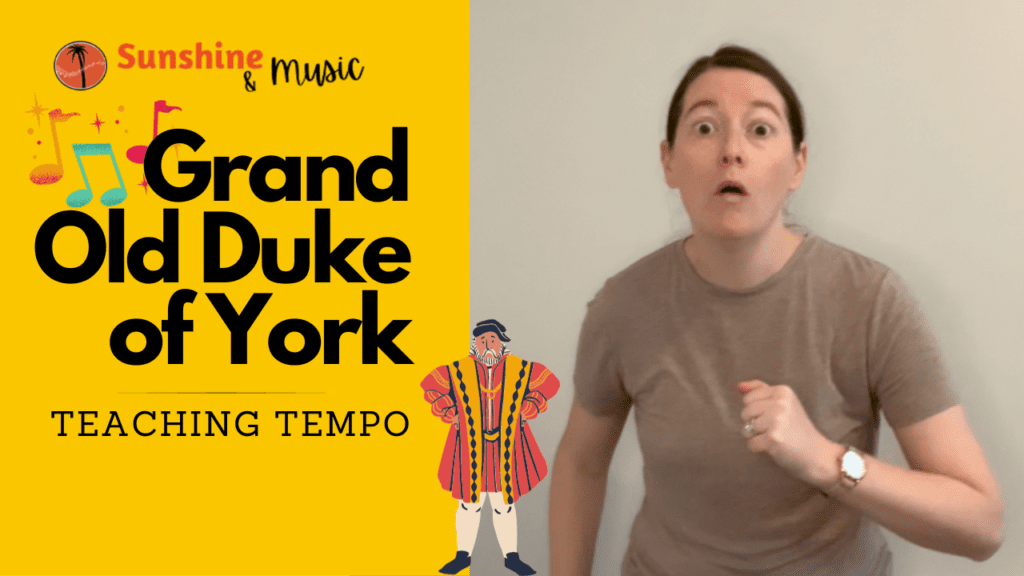
Singing
In a music program with no instruments, when it comes to melodic skills, your only real choice is singing. And that’s great! Because students can’t use instruments as a crutch. They really have to have an internalized sense of pitch.
So although it may be more challenging at first, your students will be melody MASTERS! My basic formula for teaching pitch is listen, echo, sing, read and write.
Teach melody patterns in this order and your students will have a super solid singing foundation that they can take through their whole musical career.
Listening
Another way for students to experience music is through listening. Play students a diverse repertoire of music – classical, jazz, pop and everything in between.
But don’t just have them passively listen. Use listening as an opportunity to reinforce concepts you are learning. You can have them listen for:
- Tempo changes
- Dynamics
- Form
- Instrument timbres
- Rhythm patterns
- Melodic patterns
- Music Vocabulary
- Anything else you can think of
I love to use listening maps to teach musical elements within a piece of music. It helps my students be active listeners and gives them a visual guide to follow along with the music.
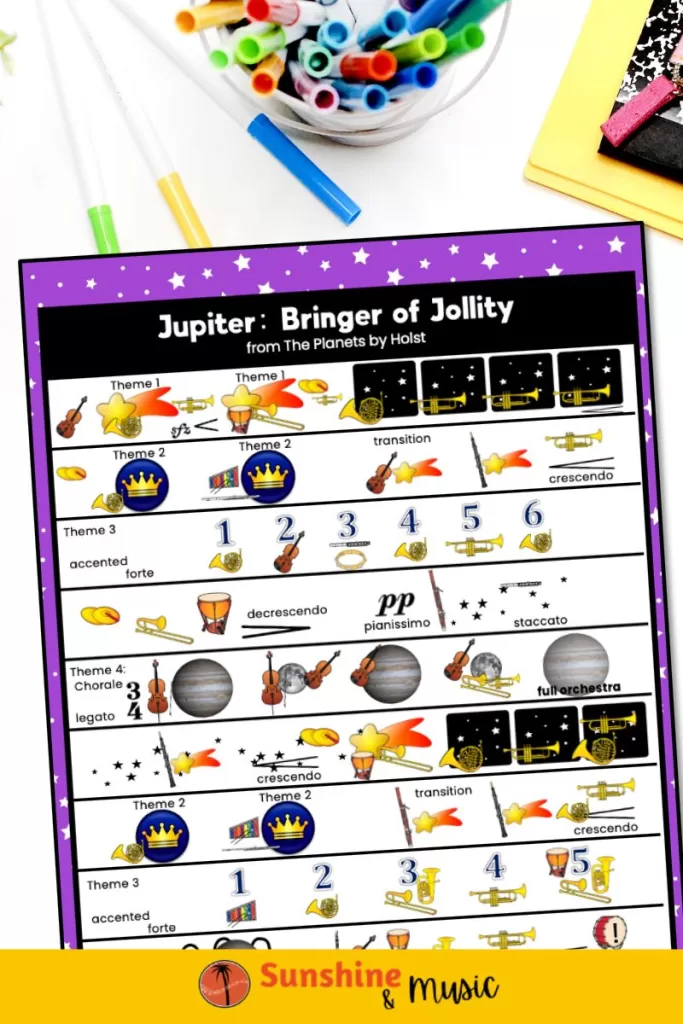
If you want more ideas on how to use listening maps in your classroom, check out Listening Maps for Music: The Ultimate How To Guide. It has all my top ideas on how to make listening maps an integral part of your music lesson.
Instruments For Elementary Music Program on a Budget
Let’s say that you are ready to buy some instruments. If you are on a tight budget, you are really going to have to prioritize what is going to give you the most bang for your buck.
Here is my list of must-have, relatively inexpensive instruments I would buy.
Rhythm Sticks
Rhythm sticks are very versatile, relatively inexpensive, and durable. You can use them for:
- Passing games
- Rhythmic drumming
- Steady beat
- Dance moves within a song
If you want some fun rhythmic drumming activities, I highly recommend Kidstix by Artie Almedia. She guides you through simple warm-up activities to children’s folk songs and then to drumming along with classical and pop songs.
Her book shows a full drumming kit using aluminum cans, tambourines, and beat boards. But I have often modified the activities so they can be done with just two motions – tap the floor and click in the air. So don’t feel like you HAVE to have every piece.
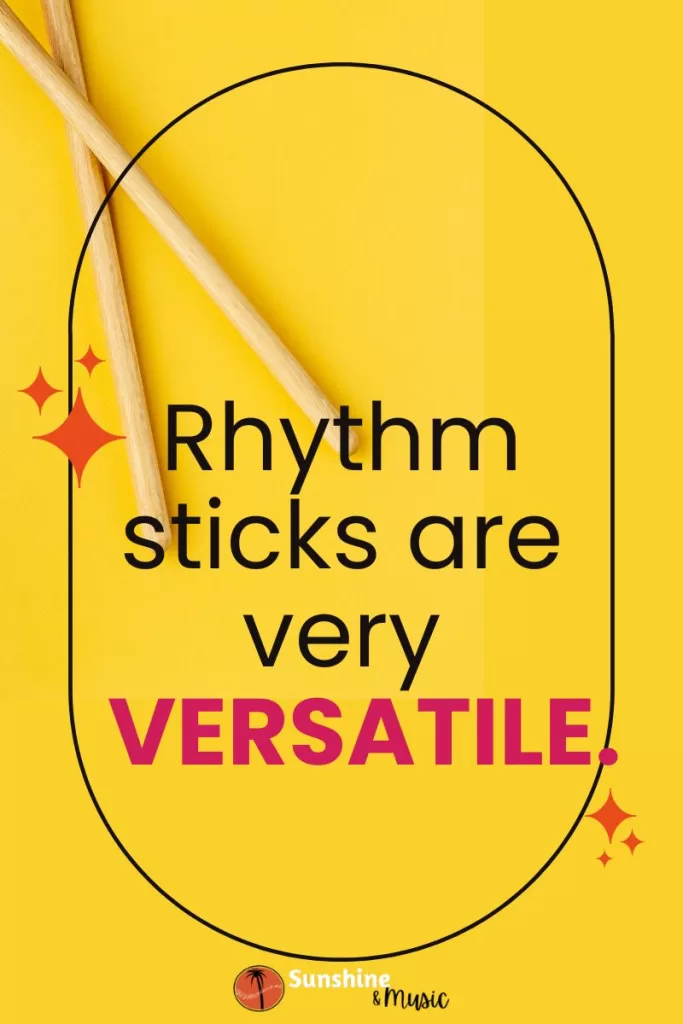
Scarves
Want to add some flair to your movement activities? Scarves are inexpensive and versatile. They can:
- Toss to the beat
- Move to show phrasing
- Illustrate fast and slow
- Show different timbres with different colors
- Show form with different movements
- And so much more
One activity that I love to use scarves with is First Snow by TransSiberian Orchestra. I use it to show steady beat as well as form and phrasing.
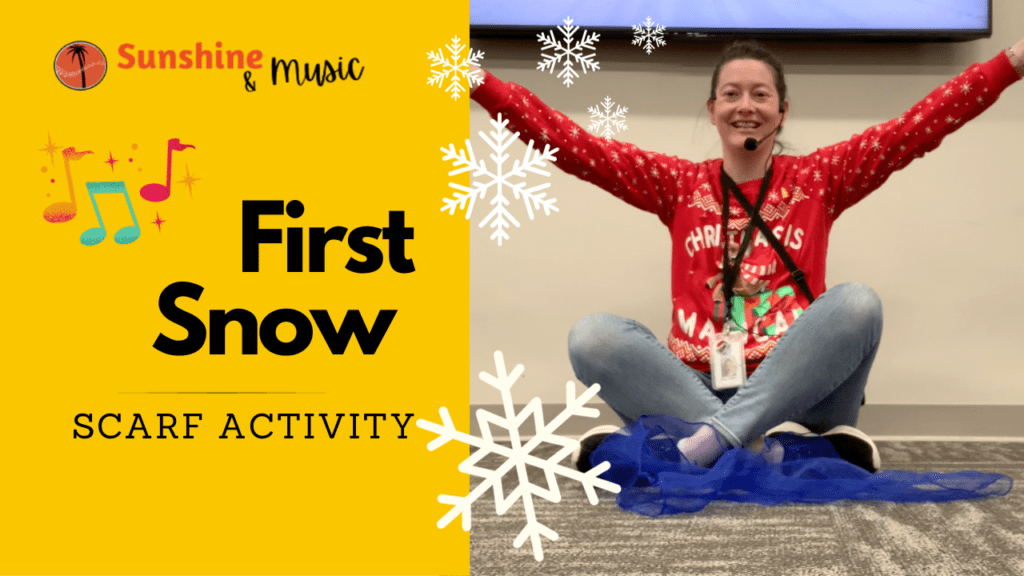
Bell sets
And now we come to melodic instruments. It is really hard to find anything of quality that isn’t going to cost you a bit of money. I think the biggest bang for your buck is some bell sets, similar to these bell sets from West Music.
Boomwhackers might be cheaper but their tone is really not great and students don’t really learn any mallet skills. Xylophones are an excellent investment, but they cost a lot and for some programs might not be attainable right away. For the price of one xylophones, you could get at least 10 bell sets. So again, better bang for your buck.
If you can’t buy enough for every student (which is most likely the case), you can have students share with a partner. Don’t have enough money to buy enough for every other student? No problem! Have students sit in lines. Have them practice their mallet part as they wait in line. When they are at the front of the line, they play their part. Then they go to the back of the line and continue practicing until everyone has had a turn.
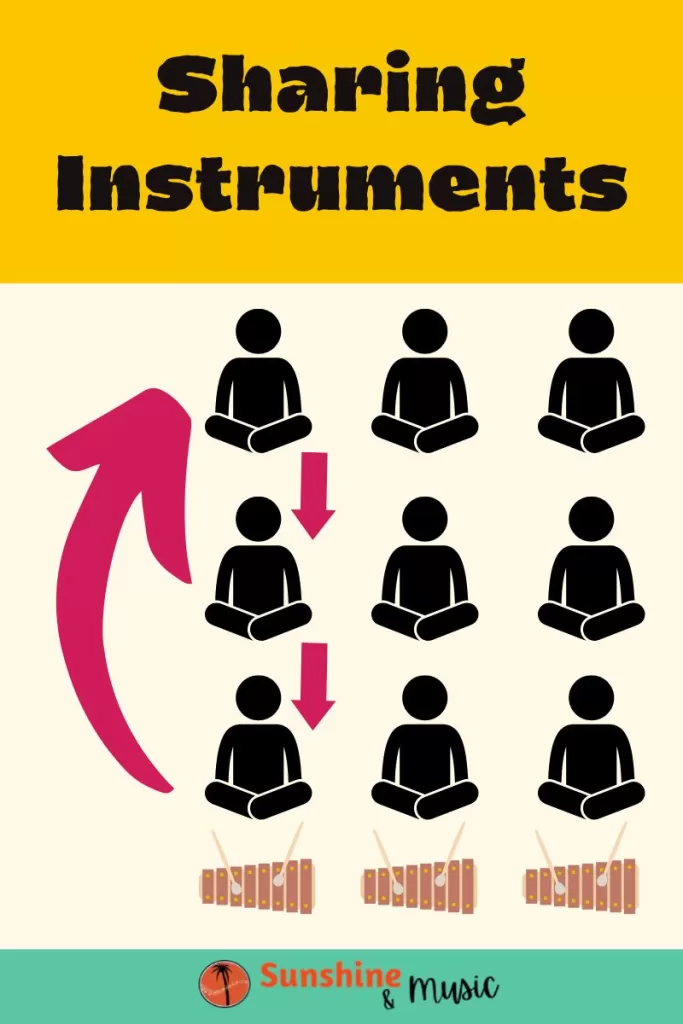
What Elementary Music Instruments Should I Buy For My Music Program
Now if you are looking long term at building a music program with a robust set of instruments, then let’s talk expansion!
Xylophones
I would start working on building up your xylophones. Maybe adding one every year or two. Or buying a bunch with a grant! (More on that below).
I would focus on alto xylophones as they are the most common. Once you are feeling solid with alto xylophones you can start adding soprano or bass xylophones and metallophones. You might not even need to go beyond alto xylophones unless you are looking to build an Orff Instrumentarium. If that’s the case, check out the Five Year Plan to Build Your Instrument Inventory from Teaching With Orff.
Ukuleles
Another option to do instead of or in addition to xylophones is ukuleles. They are very “in” right now and with good reason. They are great for learning about chords and harmony (as well as picking melodies).
If you want to start ukuleles, I recommend getting a grant and getting enough for every students – or at the very least, one for every other student. Working as partner can be a great way for students to learn through coaching each other.
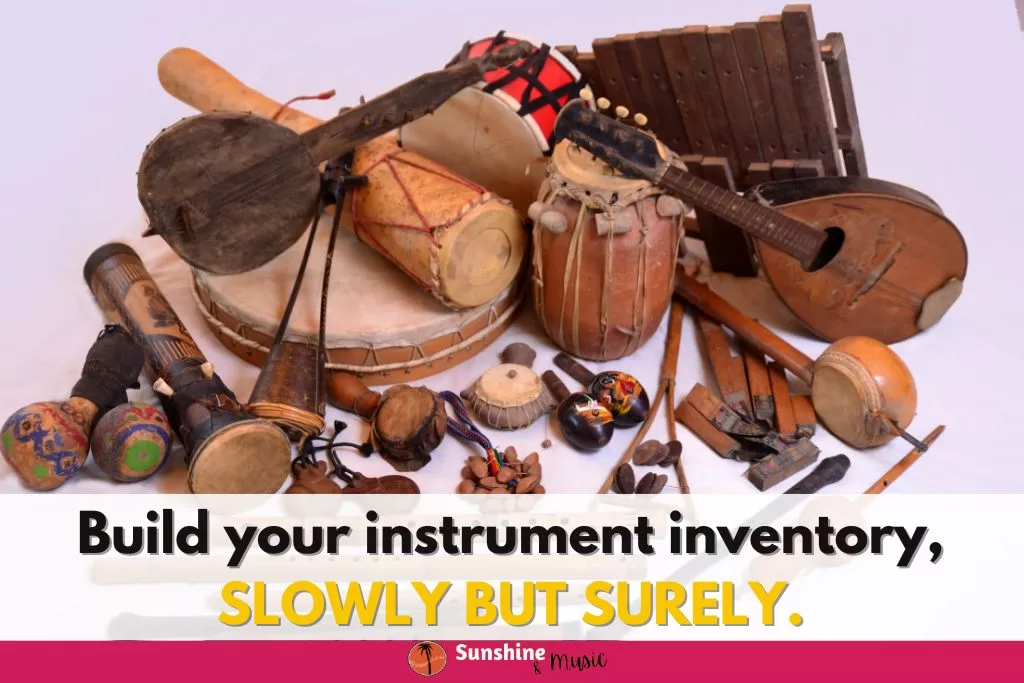
Tubanos
Want upgrade your rhythm game? Tubano drums are super popular with my students. Especially if you are incorporating World Drumming into your curriculum, tubanos are a must have.
Other Small Percussion
And now that you are expanding your instrument inventory, this is a great time to add more timbres with a variety of small percussion. I love small percussion because it is usually not crazy expensive and adds a lot of variety and fun.
Money saving tip: Don’t buy class sets of small percussion! In most cases that is way too much and way too loud. I have started buying enough instruments for one row at a time to play. This keeps noise level down and allows me to access students one row at a time.
My one exception to this rule would probably be egg shakers. I usually get a class set of those because they are quieter and less expensive.
Some of my favorite small percussion for music class include:
- Triangles
- Woodblocks
- Finger cymbals
- Lollipop drums
- Egg shakers
Parachute
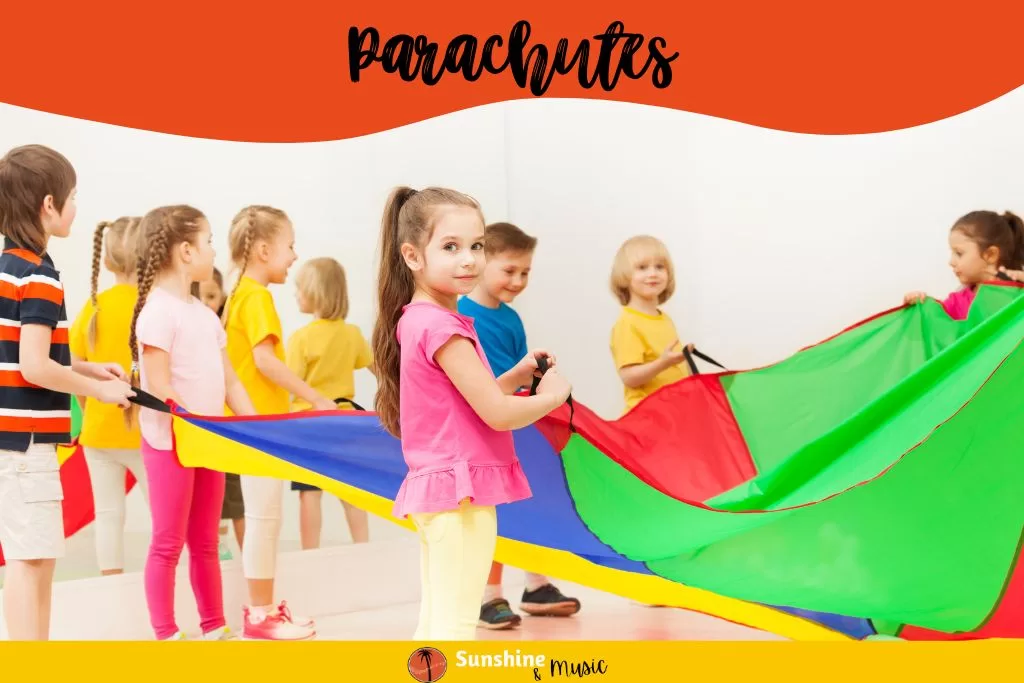
Ready to up-level your movement activities? Very few things excite my students (especially the older grades) like a parachute activity. Don’t cheap out and buy one that is too small. You won’t really be able to do the activity well as everyone will be squished, and it will make your parachute feel like a waste of money.
I would probably recommend 20-24 handle parachutes, spending on the size of your classes and your room.
I love creating parachute activities for pretty much everything. Here are some that I have shared on YouTube that were hits in my classroom:
You can follow my YouTube channel to find out when I create more.
Where To Spend Money If You Already Have Instruments
If you already have lots of instruments but have some money to spend, here are other instruments that I might recommend:
- Bass bars
- Fun sound effect instruments like duck calls or vibraslaps
- Instruments from around the world
- Ocarinas have started to be a new trend
- Dulcimers are great here in North Carolina for teaching Appalachian music
- If you teach recorders you could add alto recorders, tenor recorders or sopraninos
- Don’t forget about rolling stands for your orff instruments – especially the basses!
How To Get Funding for Elementary Music Instruments
Thinking about upgrading your instruments but not sure how to pay for it? Here are a couple suggestions.
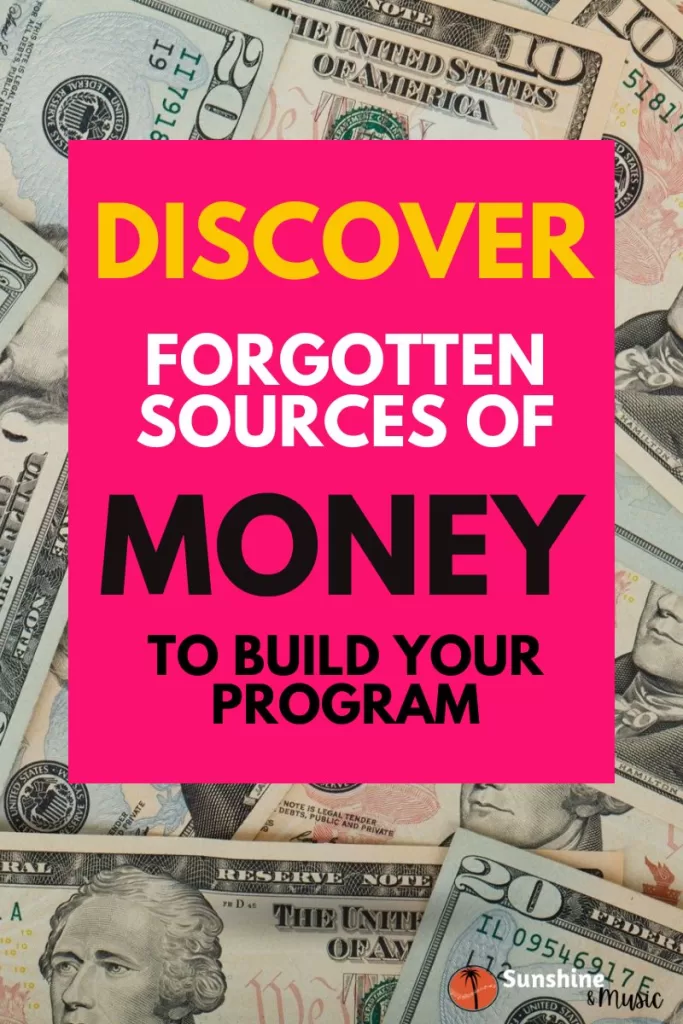
PTA
Your PTA/PTO may be willing to help fund this type of one time expense. Especially because every student in the school will benefit from it for multiple years.
School or District Budget
Some districts or school may have specific funds allocated for the music program. They might even be use-it-or-lose-it funds that disappear at the end of the fiscal period! Definitely use it. Don’t lose it. Even if you have to buy one little instrument at a time.
DonorsChoose/Crowd Sourced Funding
Another option might be crowd sourced funding like GoFundMe or DonorsChoose. Just check with your district about any specific guidelines or policies that they might have about this type of funding. But why not enlist the help of parents, the larger community and complete strangers?
I heard of big companies going through and clearing teacher wishlists. Maybe it will happen for you!
Grants from Music Organizations for Elementary Music Instruments
Another often forgotten source of funding is through area music organizations, or other grants in your district or beyond. Many professional organizations such as Orff or Kodaly chapters or national organizations, offer grants to help fund big ticket items like this.
Your community may have multiple organizations that support the arts and offer grants. Look at national organizations focused on the arts or education. Or check within your own district. If they don’t explicitly offer grants, they may still have a grant department that can help get you in touch with organizations that offer the types of grants you are looking for.
With a little planning and some financial assistance, you can build the music program of your dreams, one instrument at a time!
Enjoyed This Post? How Would You Like a Free Mini-Lesson?
Join my mailing list and never miss a blog post. Plus, you’ll receive a free jazz mini-lesson and listening map just for signing up! Just fill in your information below.
Other Posts You Might Enjoy
10 Easy Elementary Music Classroom Management Tips That Work







